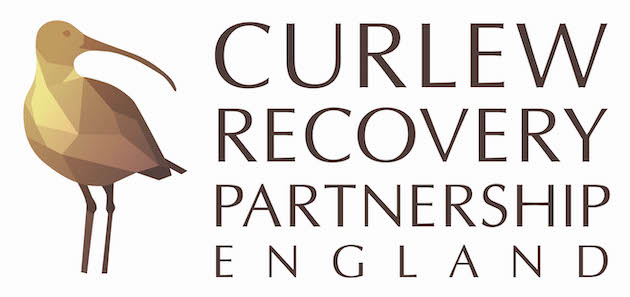Win CENS ProFlex DX5 earplugs worth £1,149 – enter here
A new dawn for curlew recovery
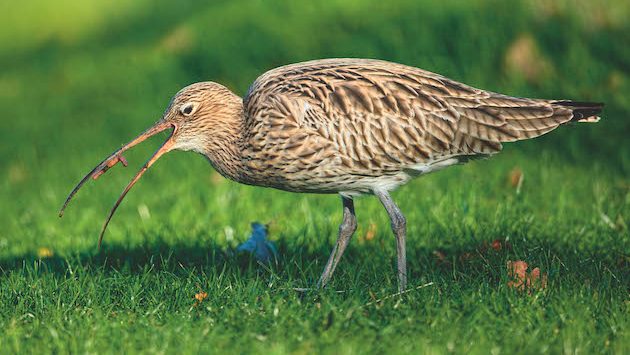 E878GA A Curlew eating a worm on the grass close up
E878GA A Curlew eating a worm on the grass close up
In January 2016, I began planning a 500-mile walk across Ireland, Wales and England to try to find out more about the plight of the Eurasian curlew. I had read the British Birds paper from December 2015 (The Eurasian curlew — the most pressing bird conservation priority in the UK?, Brown et al), and had been increasingly worried by Birdwatch Ireland press releases arriving on my desk at the BBC Natural History Unit. These horror stories screamed emergency — the Emerald Isle was witnessing a 90% decline in numbers since the 1980s, and now Numenius arquata was red-listed in the UK. The beautiful curlew seemed to be edging closer to oblivion.
Action on curlew needed
I couldn’t understand what was happening and why there was no dramatic action to turn things around. I wanted to help but wasn’t sure what an individual could do, other than walk, talk and try to bring the issue to the fore. Never in a thousand years would I have believed that in March 2021 things would have moved on so much that the Curlew Recovery Partnership England — mercifully shortened to CRP — would be launched and the curlew recognised as a flagship species for the health of much of our countryside.
Curlew Summits in 2018 and 2020, hosted by HRH The Prince of Wales, helped to establish the CRP
Head of steam
The new, Defra-funded CRP is the result of campaigning, meetings, action on the ground and lobbying by many people. Specifically, after HRH The Prince of Wales held two Curlew Summits, one at a hotel in Dartmoor in 2018, then at Highgrove in 2020, the beginnings of an official roundtable were established. It helped that curlew are greatly loved, are not controversial and have a call that speaks of wildness, and so building a head of steam around their protection was easier than it would be for some other species. We are now up and running and the CRP steering group consists of nine organisations that are at the heart of curlew recovery. In alphabetical order they are: Bolton Castle Estate, the British Trust for Ornithology, Curlew Action, Curlew Country, the Duchy of Cornwall, the GWCT, Natural England, the RSPB and the Wildfowl & Wetlands Trust.
The newly appointed partnership manager is Professor Russell Wynn, who will do most of the heavy lifting of the day-to-day work, and I am the chair. The steering group is simply the central hub, but the network is far greater and will reach out to many other NGOs, individuals, landowners, shooting estates, wildlife organisations and agencies. We are interested in connecting with anyone interested in curlew conservation; contact details are provided at the end of this article.
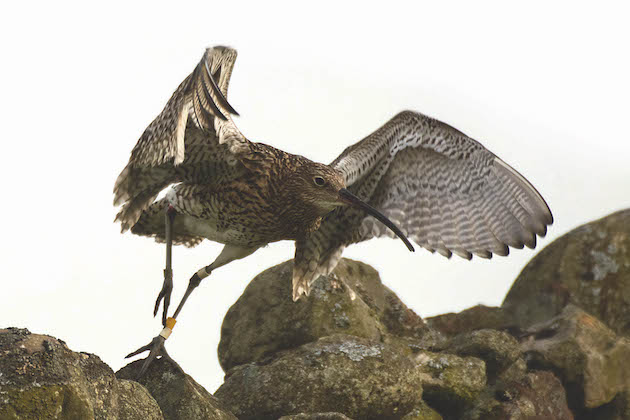
There have been worrying declines in the curlew breeding population throughout much of the UK
Turning it around
The aim of the partnership is to turn it around for curlew, their landscapes and the associated wildlife. We have set a target of 10 years to start to see a recovery. It is a big ask, and we will need everyone on board to achieve it. On our website we pledge to “provide co-ordination and support to those engaged in curlew conservation, while also providing benefits for other threatened species and habitats and helping people to connect with nature”. I admit to feeling both hopeful and daunted by the enormity of this challenge, but we have to do it.
Let me take ‘daunted’ first. Curlew are birds of landscapes, not individual habitats. They winter on the coast, breed inland and use pretty much everywhere else apart from woodlands and urban areas for roosting and feeding. They are birds of the open countryside, of mud, meadow and moor. These represent a significant part of the UK. Both the lowlands and the uplands face huge challenges as we square up to a post-Brexit Britain and the ravages of COVID-19. Who knows where in the pecking order conservation will be as we try to get the country back on its feet.
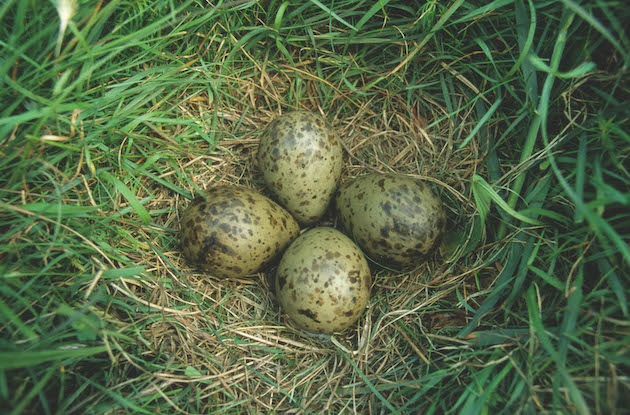
The ground-nesting curlew gets dragged into bitter arguments over moorland management
Being hopeful
When it comes to being hopeful, that is a concept best dealt with by poetry. It was Emily Dickinson who wrote that: “Hope is the thing with feathers that perches in the soul.” In this case, the bird has brown, grey and cream feathers and they adorn the long-necked, curved body of the curlew. In this one wader lies the hope that many share — that we can make Britain much greener by working together, that the future can be rich in wildlife and provide for people as well.
Hope is a universal word that every human being understands. It is confidence in a better future, an expectation that something deeply desired will happen, that we are not stuck in the present. Everyone around the CRP table believes in this hope for curlew, and it is a powerful, binding way to begin what will undoubtedly be a long, bumpy journey. I am not being negative by expressing that, simply realistic, because passionate people will inevitably disagree on some things, and in conservation, certain issues raise the temperature significantly.
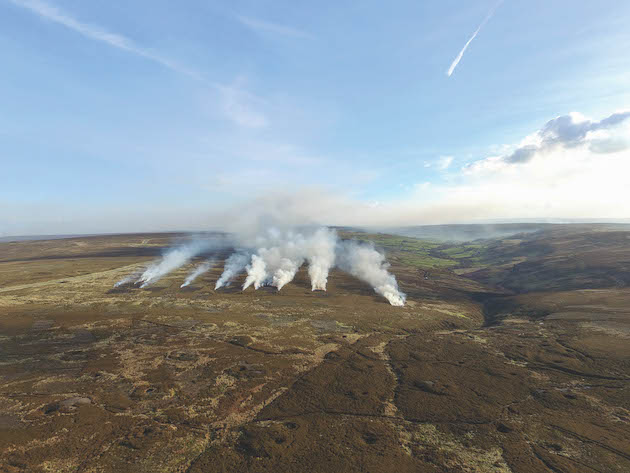
There are differing views on how land management techniques such as heather burning affect curlew
Bitter battles
It is the lot of the poor curlew to find itself in the midst of bitter conservation battles. Because it is a ground-nesting bird on moorland and farmland, it is unwittingly surrounded by the anger provoked by arguments over grouse moor management, predator control, heather burning and intensive agriculture. These problems have been aired many times and I have written about them myself in Curlew Moon and in my forthcoming book, Beak, Tooth and Claw. The CRP won’t solve them, that is not its job. The CRP has to be solely focused on the curlew and its recovery.
It is too easy to be deflected by disagreements, but our modus operandi is extremely simple: if what you are doing is based on science, best practice and is within the law, we will support you as best we can, while also recognising that individual curlew projects are best placed to deliver solutions that take account of local conditions. Curlew conservation is not cut and paste; it is nuanced and reactive to changing conditions and communities, and, in the longer term, to climate change.
The steering group has two members of the GWCT and so shooting interests are well represented. The National Gamekeepers’ Organisation, for example, is an enthusiastic partner and everyone is welcome. We all want healthy, balanced populations of predators and prey, which include our most vulnerable species, such as the curlew. The CRP’s ambition is to be transformative and we recognise the vital role that all conservationists play, including farmers and land managers. We need to engender widespread trust and support to achieve successful outcomes for curlew, and we want to hear your views. We will soon be producing a questionnaire, which we hope that you will help with by sharing your knowledge.
In a nutshell, for curlew and all they represent to thrive once again, we have to all look in the same direction. As long as we respect each other and keep focused on a goal, we will make Britain a better place for wildlife, and the curlew will call over a richer, more life-sustaining countryside. I hope you will join us in this vision.
‘‘“The curlew is recognised as a flagship species for the health of our countryside”’’Charles Sainsbury-Plaice; Tom Streeter; getty images; alamy’’ • Shooting Times & Country Magazine’’Shooting Times & Country Magazine • ’’Curlew’’“Curlew conservation is not cut and paste; it is nuanced and reactive to change”’’ • Shooting Times & Country Magazine’’Curlew Summits in 2018 and 2020, hosted by HRH The Prince of Wales, helped to establish the CRP’’The ground-nesting curlew gets dragged into bitter arguments over moorland management’’ Curlew Recovery Partnership England Website: curlewrecovery.org Email: hello@curlewrecovery.org’’There are differing views on how land management techniques such as heather burning affect curlew’’For curlew and all they represent to thrive once again, we have to all look in the same direction’’There have been worrying declines in the curlew breeding population throughout much of the UK’
Related Articles
Get the latest news delivered direct to your door
Subscribe to Shooting Times & Country
Discover the ultimate companion for field sports enthusiasts with Shooting Times & Country Magazine, the UK’s leading weekly publication that has been at the forefront of shooting culture since 1882. Subscribers gain access to expert tips, comprehensive gear reviews, seasonal advice and a vibrant community of like-minded shooters.
Save on shop price when you subscribe with weekly issues featuring in-depth articles on gundog training, exclusive member offers and access to the digital back issue library. A Shooting Times & Country subscription is more than a magazine, don’t just read about the countryside; immerse yourself in its most authoritative and engaging publication.






